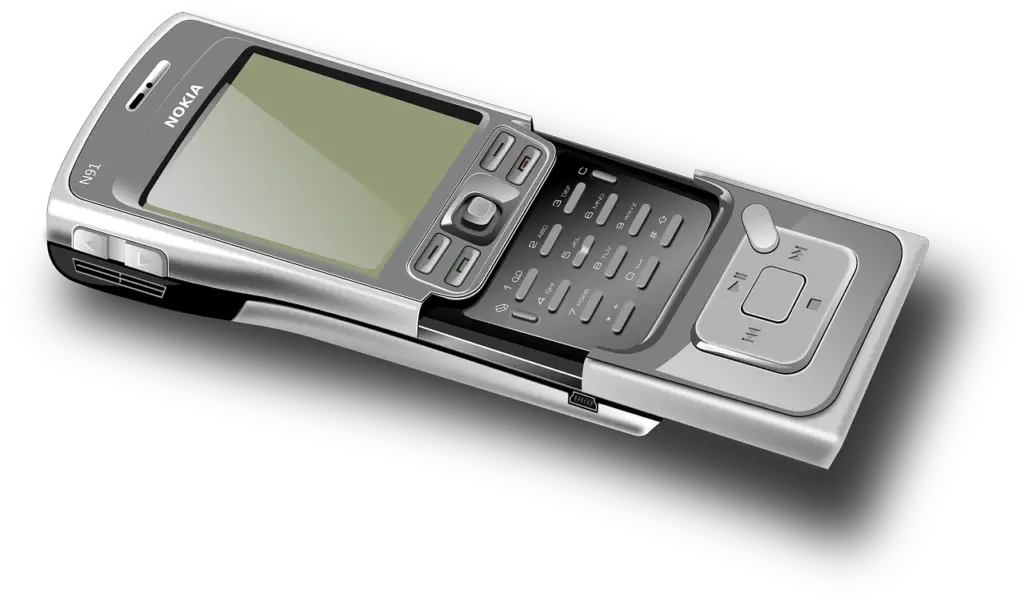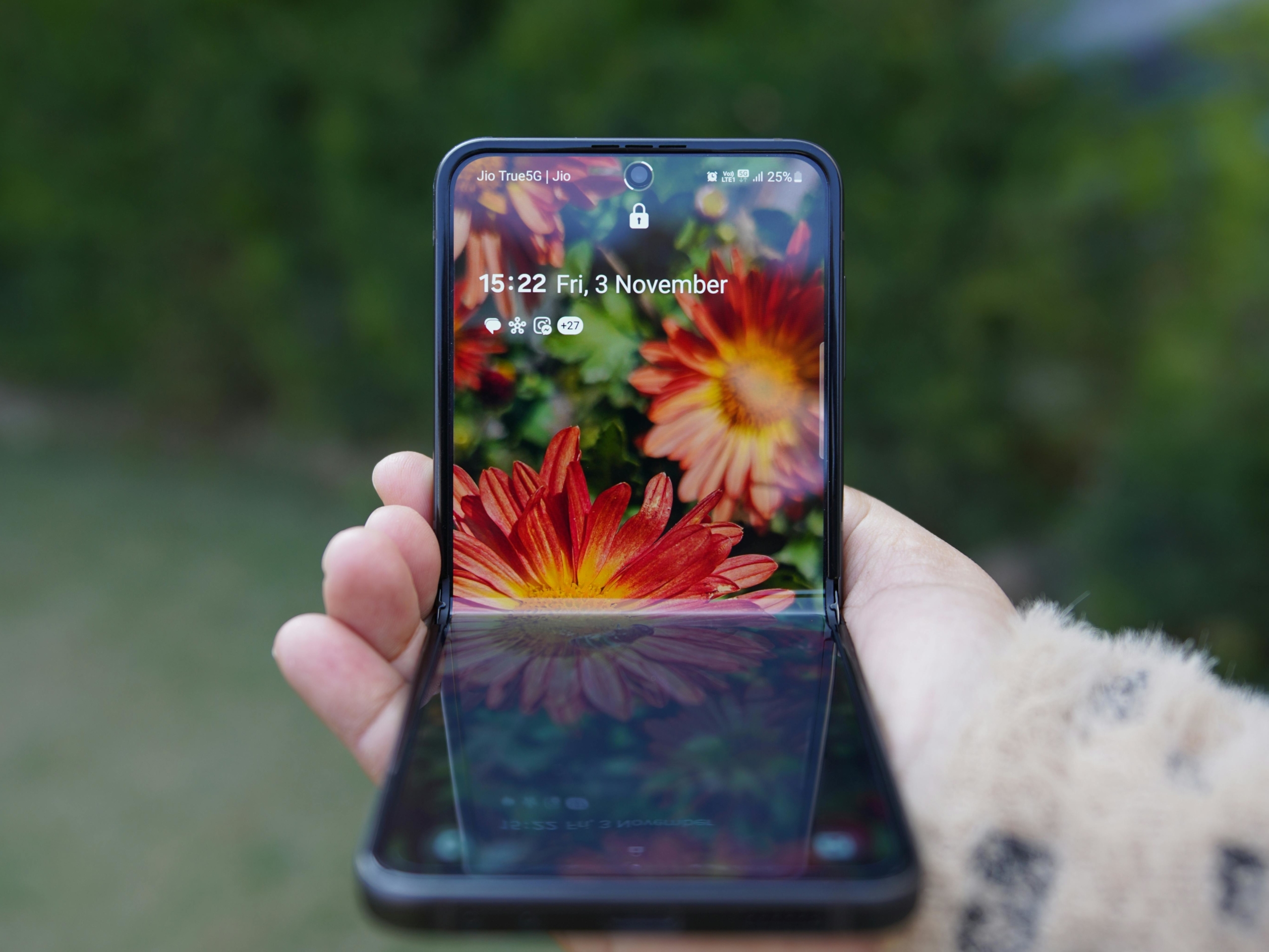
Cell phones have come a remarkably long way, to start with the bulky and expensive “bricks” of the 1980s to today’s 5G Smartphones. What started as a niche luxury item has now become a staple part of our modern life, with over 7 billion smartphone users worldwide.
The rapid evolution of mobile technology has been evolving, modifying how we communicate, work, learn, and entertain ourselves on a daily basis. Let’s take this time to look back at the major milestones and most popular cell phone models that paved the way for today’s smartphones.
Most Popular Cell Phones Through The Eras
The Pioneering Brick Phones (1970s-1980s)
While car phones existed earlier, the first truly portable handheld cell phone was the Motorola DynaTAC 8000x, unveiled in 1983. Weighing nearly 2 pounds and measuring 13 inches long, it earned the unflattering nickname “brick phone.” Despite its hefty $3,995 price tag (over $10,000 today), it sold remarkably well as people marveled at its mobile capabilities.
The Rise of the “Candy Bar” (1990s)
As the battery size shrunk and digital networking expanded in the 1990s, cell phones became much more compact and affordable for the masses. Iconic candy bar shaped models like the Nokia 1011 (1992) and Motorola StarTAC (1996) could finally fit in a pocket or purse.
The Nokia 1011 was arguably the first truly mass-produced cell phone, selling 20 million units globally. The slimmer StarTAC wowed with its clamshell folding design and ended up selling an incredible 60 million units by 2000. As prices fell and network coverage improved, cell phone adoption skyrocketed from 340,000 US users in 1985 to 109 million by 2000.
The Dawn of the Smartphone (2000s)
The new millennium kicked off the smartphone era as data networks allowed advanced Internet connectivity and apps. Early devices like the Palm Treo and Blackberry fused PDAs with cell phones, making email and basic web browsing portable.
However, it was Apple’s iPhone in 2007 that brought smartphone tech to the mainstream. Its user-friendly touchscreen and premium multimedia capabilities like music, videos, and maps sparked a paradigm shift. Smartphones rapidly evolved from business tools into all-purpose mobile computers for everyone.
Other manufacturers like Samsung (Android OS), HTC, LG, and Motorola played catch-up over the next few years. The iPhone 3G (2008) and iPhone 4 (2010) flew off shelves, kickstarting Apple’s dominance. Google’s Android operating system took off as well, allowing rivals like Samsung’s Galaxy series to flourish with slick interfaces and lower prices.
The Pocket Camera Revolution (2010s)
As smartphones went mainstream, competition ratcheted up to pack more and better cameras inside the sleek bodies. Mobile photography took off through the 2010s thanks to steady camera megapixel increases and software advances enabling sharper zoom, HDR, panorama, night modes, and more.
Major camera milestones included the 8MP cameras on the iPhone 4s (2011) and Samsung Galaxy S3 (2012), the 41MP Nokia Lumia 1020 (2013), iPhone’s Portrait Mode (2016), and multi-lens/depth camera arrays on the latest iPhone 12 Pro and Galaxy S22 Ultra series. Thanks to computational processing, today’s top smartphone cameras can rival professional dedicated cameras in many ways.
By the late 2010s, phones graduated beyond photography to augmented reality apps (Pokemon Go, SnapChat lenses), 3D scanning (iPhone 12 Pro’s LiDAR sensor), mobile gaming rivaling consoles, mobile productivity suites as powerful as laptops, and more. With larger edge-to-edge displays (iPhone X, Galaxy Note), all-day battery life, and ultra-fast 4G LTE data; cell phones had become full-fledged mobile workstations for many professionals.
The 5G and Foldable Future of Phones

As of today, phones continue to evolve rapidly with a few new frontiers namely:
- Foldables
- 5G networking
- Increasingly sophisticated mobile
- AI/computational photography…amongst others
Samsung and others have begun commercializing foldable phones with tablet-sized flexible displays that fold up into compact pockets. Early models included the Samsung Galaxy Fold and Huawei Mate X in 2019. While still an emerging niche plagued by durability issues, foldables offer a tantalizing glimpse of phones morphing into portable ergonomic workstations.
5G, the fifth generation of cellular networking, is another game-changer. Launched in 2019, 5G boosts peak speeds over 10X faster than 4G LTE. Its ultra-low latency enables near real-time communications powering innovations like self-driving cars, remote robotic surgery, mobile cloud gaming, and more. While still in its infancy, 5G will be as impactful in this decade as 4G was in the 2010s.
Finally, the rapid acceleration of on-device AI and computational photography will continue transforming phones into mobile supercomputers. Google’s Tensor chipsets powering the Pixel 7 can process dazzling images and videos with HDR, night sight, motion blur, and more rivaling traditional standalone cameras. Machine learning models make phones smarter assistants that can answer queries, edit video, and more.
The Most Iconic Phone Debuts Through The Years
While there have been countless phone models, a handful of iconic releases stand out as bold innovations that reshaped mobility forever:
- Motorola DynaTAC 8000x (1983) – The pioneer “brick” phone that birthed modern cellular mobility.
- Motorola StarTAC (1996) – The first wildly popular clamshell “flip” phone design.
- Palm Treo (2002) – Fused PDAs with cell phones as an early smartphone.
- BlackBerry (2002) – Brought mobile email to the masses, sparking the smartphone productivity revolution.
- Apple iPhone (2007) – Game-changing intuitive touchscreen slab form factor and interface set the modern standard.
- Android HTC Dream (2008) – First commercial Android smartphone kicked off the iPhone’s biggest competition.
- Samsung Galaxy S III (2012) – Breakthrough slim design popularized “phablets” with giant displays.
- Google Pixel (2016) – First phone with optimized AI and computational imaging processing.
- Samsung Galaxy Fold (2019) – First mainstream foldable smartphone with a flexible tablet-sized display.
- Apple iPhone 13 & 13 Pro Max (2022) – Has iOS 15 with a leap in battery life which is up to 2.5 hrs more.
The Most Popular Phone Models of All Time
While innovations sparked rapid shifts in technology, basic affordability and durability made some phone models an absolutely smashing hit, some of them are:
- Nokia 1100 (2003) – 250 million units
- Nokia 1110 (2005) – 250 million
- iPhone 6/6 Plus (2014) – 222 million
- Nokia 105 (2013) – 200 million
- Samsung Galaxy Grand Prime (2014) – 25 million
- Samsung Galaxy S4 (2013) – 83 million
- iPhone 5 (2012) – 70 million
- Samsung Galaxy S3 (2012) – 70 million
- Apple iPhone 4S (2011) – 60 million
- Motorola RAZR V3 (2004) – 130 million
The list showcases a few notable trends. Basic, affordable feature phones from Nokia and Samsung like the 1100, 1110, and 105 models topped the charts by making mobile connectivity accessible to developing markets. However, Apple and Samsung flagship smartphones also dominated the best-seller ranks thanks to their premium branding and cutting-edge innovations.
While Apple was late to the mobile game, the iPhone quickly disrupted the industry. The iconic iPhone 6/6 Plus was the best-selling smartphone ever after its 2014 launch, shifting over 222 million units. Its larger 4.7″ and 5.5″ displays were a major draw, as were its improved camera, faster processor, and sleek metal/glass design.
Samsung closely trailed Apple as the Android smartphone leader. The Galaxy S3 (2012) and S4 (2013) were their first global super-hits, selling 70+ million each with their elegant designs, vibrant AMOLED displays, and competitive camera performance. Samsung’s more affordable mid-range Galaxy Grand Prime shifted 25 million units as well.
Future Phone Trends
As we look ahead, three major trends are shaping the future of smartphones:
- Advanced AI/computational photography.
- Innovative form factors like foldables.
- 5G’s revolutionary connectivity.
Computational Photography Revolution
With each new chip generation, phones gain serious leaps in artificial intelligence and on-device computer vision processing power. This allows for dramatically smarter camera capabilities compared to traditional digital cameras.
Google’s Tensor chipsets powering their Pixel phones can render incredibly crisp HDR images with enhanced detail and low light performance. The iPhone 14 Pro applies a machine learning “Photonic Engine” to capture more color data and enable remarkable low-light sensitivity. Smartphone night and portrait modes now routinely outclass many standalone cameras.
Beyond photography, this ambient AI/imaging intelligence allows phones to sense 3D motion tracking for augmented reality filters/graphics (Snapchat lenses), detailed LiDAR 3D scanning (iPhone 12 Pro), and sophisticated on-device video editing using machine learning models.
Foldables
While most phones still use the iconic slab or candy bar shaped design, foldables offer exciting new form factors by using flexible displays and hinges. Foldables can provide a portable mini-tablet experience in a regular pocket-sized phone.
Samsung’s Galaxy Z Fold series leads the way, with a 7.6″ foldable main display and 6.2″ cover display in a compact footprint. Opened up, it offers laptop-like multitasking and productivity capability. foldables still face durability and cost hurdles but allow phones to morph into highly portable workstations.
Other foldable variations include clamshells like Samsung’s Z Flip series that fold vertically, or the Oppo Find N with a landscape fold to divide the screen into laptop-like viewports. As display technology advances, expect more innovative form factors tailored for mobile productivity and entertainment in ultra-portable packages.
5G Hyper Connectivity
While 4G LTE ushered in today’s app ecosystem and mobile broadband norm, 5G will supercharge wireless connectivity with blistering multi-Gigabit speeds, massive bandwidth, and ultra-low latency. This enables radically new immersive experiences only possible with 5G’s high-speed responsiveness.
For gaming, 5G eliminates lag for seamless cloud gaming experiences rivaling consoles. Paired with improved mobile GPUs/chips, phones become powerhouse handheld gaming devices. 5G also allows real-time rendered augmented reality overlays, virtual dressing room apps, and more.
High-bandwidth 5G makes 4K streaming a breeze, enabling phones to be premium mobile entertainment hubs. Concerts, sports, and live events become untethered virtual reality experiences through 5G. Low-latency also unlocks new frontiers like remote robotic surgery controlled by 5G-connected phones.
As 5G networks expand coverage worldwide alongside amazing content/apps leveraging the technology, it will spark another mobile revolution in this decade. While still in its infancy, 5G promises to transform phones from helpful pocketable touchscreens to fully immersive environment computers.
Conclusion
While it’s easy to take our pocket supercomputers for granted, they’ve consistently upended and revolutionized entire industries – photography, gaming, productivity, dating, streaming entertainment, and more. All stemming from that first unwieldy but visionary “brick” phone.
As artificial intelligence, flexible displays, and 5G networks continue advancing, it’s tantalizing to imagine just how transformative mobile will become in the coming decade. Our tiny handsets could well serve as digital gateways to a blended, augmented world blurring the physical and digital realms. Always-connected, ambient computing experiences seamlessly synced to us wherever we go.
For a technology ecosystem that’s constantly iterating and redefining itself, the future of mobile always seems equal parts incredible and unpredictable. While substantial generational leaps like the smartphone have created upheaval at times, each major shift ultimately empowers us with radically more efficient ways to communicate, work, learn, and experience our world.
Rather than looking at our phones as distracting gadgets, they’ve evolved into essential tools connecting us to virtually all information, services, and each other in real-time. Wherever innovators take cell phone technology next, that core capability of ubiquitous digital connection will likely only grow more paramount across both our personal and professional existences.
What began as a simple cellular conversation has opened the door to full-fledged mobile computing possessing potential we likely still cannot fully grasp. The most incredible capabilities may still lie ahead for these little rectangular marvels that now dominate so much of how we live in the 21st century.










